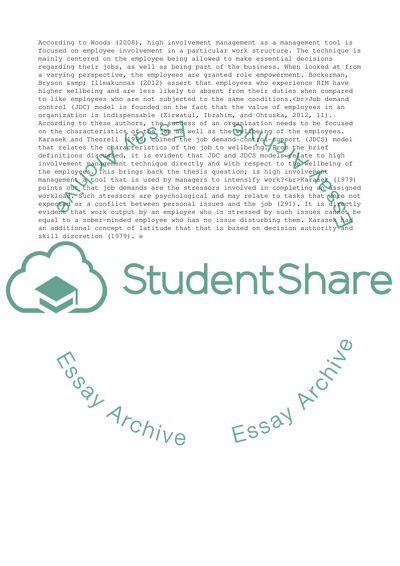Cite this document
(“High Involvement Management as a Management Tool to Intensify Work Essay”, n.d.)
High Involvement Management as a Management Tool to Intensify Work Essay. Retrieved from https://studentshare.org/management/1683492-please-draw-on-karasek-and-theorells-1990-job-demand-control-model-to-critically-evaluate-the-statement-that-high-involvement-management-is-primarily-used-as-a-management-tool-to-intensify-work
High Involvement Management as a Management Tool to Intensify Work Essay. Retrieved from https://studentshare.org/management/1683492-please-draw-on-karasek-and-theorells-1990-job-demand-control-model-to-critically-evaluate-the-statement-that-high-involvement-management-is-primarily-used-as-a-management-tool-to-intensify-work
(High Involvement Management As a Management Tool to Intensify Work Essay)
High Involvement Management As a Management Tool to Intensify Work Essay. https://studentshare.org/management/1683492-please-draw-on-karasek-and-theorells-1990-job-demand-control-model-to-critically-evaluate-the-statement-that-high-involvement-management-is-primarily-used-as-a-management-tool-to-intensify-work.
High Involvement Management As a Management Tool to Intensify Work Essay. https://studentshare.org/management/1683492-please-draw-on-karasek-and-theorells-1990-job-demand-control-model-to-critically-evaluate-the-statement-that-high-involvement-management-is-primarily-used-as-a-management-tool-to-intensify-work.
“High Involvement Management As a Management Tool to Intensify Work Essay”, n.d. https://studentshare.org/management/1683492-please-draw-on-karasek-and-theorells-1990-job-demand-control-model-to-critically-evaluate-the-statement-that-high-involvement-management-is-primarily-used-as-a-management-tool-to-intensify-work.


